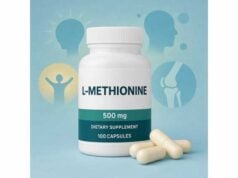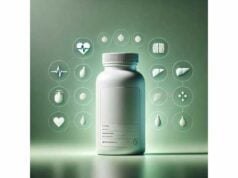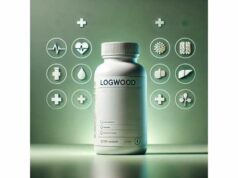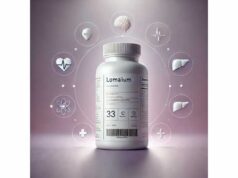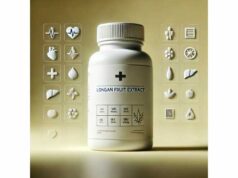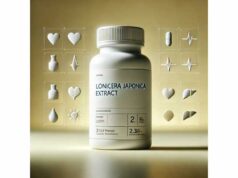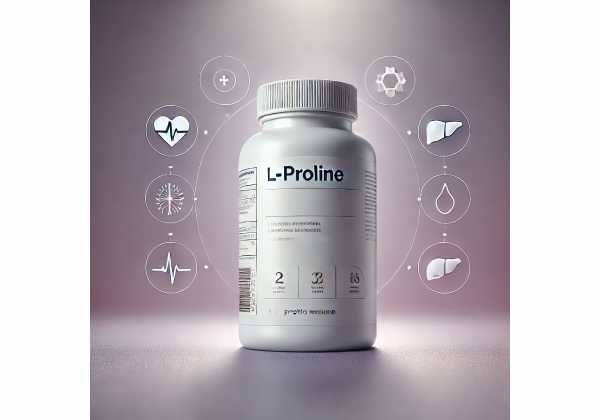
L-proline is a nonessential (sometimes “conditionally essential”) amino acid best known for its starring role in collagen—the body’s most abundant structural protein. Proline-rich sequences give collagen its triple-helix strength, which supports healthy skin, joints, bones, tendons, and blood vessels. Beyond structure, proline shuttles through a dedicated metabolic loop—the proline–P5C cycle—that connects to cellular energy, redox balance, and stress signaling. That makes L-proline relevant not only for connective tissues and wound care, but also for exercise recovery and healthy aging. In supplements, L-proline appears alone, paired with vitamin C, or as part of collagen peptides and gelatin. This guide explains what L-proline does, where it may help, how to use it, and what to watch out for—so you can decide whether to use proline itself, focus on collagen peptides, or rely on a protein-first diet.
Key Insights
- Supports collagen formation for skin elasticity, joint integrity, tendon and bone matrix maintenance.
- Typical supplement use: 250–1,000 mg/day L-proline; collagen peptides (source of proline) 10–15 g/day with 50–100 mg vitamin C.
- Generally well tolerated; avoid very high chronic intakes without clinical oversight and use caution in kidney or liver disease.
- People with hyperprolinemia or on strict protein-restricted regimens should avoid self-supplementing.
Table of Contents
- What is L-proline?
- Benefits that matter in real life
- How to use L-proline (or collagen) well
- Dosage and timing by goal
- Safety, side effects, and who should avoid it
- What the evidence shows and where it is thin
What is L-proline?
L-proline is one of twenty protein-building amino acids, but it’s structurally unique: its side chain loops back to the backbone nitrogen, creating a rigid “imino” ring. That ring forces sharp turns in protein chains and stabilizes the Gly–Pro–X / Gly–X–Hyp motifs that make collagen’s triple helix possible. Together with hydroxyproline (a vitamin C–dependent modification of proline), it can account for roughly a quarter of collagen’s amino acids by mass, which explains why proline status influences connective tissue quality.
Your body can make proline from glutamate and ornithine, yet demand spikes during rapid matrix turnover—think post-injury healing, heavy training blocks, or aging tissues remodeling. In these settings, dietary support (via high-quality protein, collagen peptides, or targeted L-proline) can help keep collagen synthesis on track.
Proline also fuels a metabolic cycle that toggles between proline and pyrroline-5-carboxylate (P5C). Enzymes in this loop—especially proline dehydrogenase (PRODH)—link proline flux to mitochondrial energy, reactive oxygen species (ROS), NAD+/NADH balance, and cellular stress responses. In plain terms, the proline–P5C cycle acts like a small metabolic gearbox: it helps cells cope with energy demand and oxidative stress and appears to cue signals for growth and repair. That’s relevant to heart health, immune responses, and even tumor biology (where the same levers can be co-opted in disease).
Food sources. Proline is abundant in animal proteins and especially high in collagen-rich foods (slow-cooked meats, bone broth, gelatin). Collagen peptides supply easily absorbed di- and tri-peptides enriched in proline, hydroxyproline, and glycine. Plant proteins contain less proline per gram but can still support needs if total protein is adequate.
Forms you will see.
- L-proline (free form): for precise dosing or to fortify low-proline diets.
- Collagen peptides/gelatin: whole-matrix approach that supplies proline plus companion amino acids; practical for skin and joint goals.
- Stacks: L-proline paired with vitamin C (required for proline hydroxylation) or combined with glycine and lysine in connective tissue formulas.
Bottom line: L-proline is both a brick (collagen building block) and a signal (through its metabolic cycle). Most people cover needs with diet, but targeted use makes sense when collagen turnover rises or when you want a studied, food-like way to support connective tissues.
Benefits that matter in real life
1) Collagen maintenance for skin and joints.
Because collagen is proline-dense, maintaining a steady influx of proline-rich peptides helps support dermal matrix, cartilage, tendons, and ligaments. In controlled trials of collagen peptides (a practical proxy for proline delivery), participants often report improved joint comfort and function over 8–24 weeks, with some studies showing better recovery metrics after exercise and small gains in fat-free mass when paired with resistance training. Mechanistically, providing proline- and hydroxyproline-rich peptides, plus vitamin C, supports the enzymes (prolyl and lysyl hydroxylases) required to stabilize new collagen. This is why many protocols time collagen 30–60 minutes before loading a tendon or joint; peak peptide appearance coincides with mechanical signaling to “lay new fibers.”
2) Tendon and bone support during rehab and training.
Healing tissues need both the scaffold (collagen) and the signal (mechanical strain) to remodel. Practical protocols pair 10–15 g collagen peptides with 50–100 mg vitamin C and a short bout of rope skipping or rehab loading to bias new collagen where it’s needed. For athletes with a history of tendinopathy or for anyone rehabbing a sprain, this stack can be a low-risk adjunct to a well-designed loading plan.
3) Wound healing and healthy aging.
During wound repair, proline demand rises as fibroblasts synthesize new matrix. Nutrition teams often emphasize adequate total protein, vitamin C, zinc, and energy alongside specific collagen or proline inputs. In older adults, age-related declines in extracellular matrix turnover and micronutrient status can slow remodeling; gentle, progressive loading plus collagen peptides and vitamin C can nudge the process along.
4) Metabolic and redox resilience (cellular level).
The proline–P5C cycle touches mitochondrial energy and redox control. Experimental work indicates PRODH activity influences how tissues respond to stress (including the heart under pressure load) and how cells balance ROS. While this is not a call to megadose L-proline, it underscores why adequate proline within a nutrient-sufficient diet matters for recovery and stress tolerance.
5) Hair, nails, and vascular structure (indirect).
Keratin structures rely on minerals and sulfur amino acids, yet the connective tissue beds beneath them depend on collagen. Similarly, blood vessels need healthy collagen/elastin for compliance. Proline sufficiency contributes indirectly by supporting these structural proteins and cross-linking processes (again, with vitamin C as a key cofactor).
What to expect: benefits from collagen-centric strategies accrue gradually, typically after 8–12 weeks of daily intake tied to appropriate exercise or rehab. For skin elasticity and hydration, timelines are similar; for post-injury stiffness or tendon loading tolerance, plan for several months of consistent work.
How to use L-proline (or collagen) well
Pick your tool based on the goal.
- Targeted gram-accurate support: Choose L-proline (free form) when you need a specific dose layered onto an already adequate protein intake (e.g., plant-predominant diets with lower proline density).
- Broad connective-tissue support: Choose collagen peptides (10–15 g/day), which naturally supply proline, hydroxyproline, and glycine in the ratios your matrix expects.
- Wound or post-injury support: Coordinate with a clinician or dietitian; the plan often emphasizes overall protein (1.2–1.6 g/kg/day) plus collagen peptides and micronutrients.
Always pair with vitamin C.
Proline must be hydroxylated to hydroxyproline to stabilize collagen helices—an enzyme step that requires vitamin C. Add 50–100 mg vitamin C with each collagen or L-proline dose (a small glass of citrus juice or a low-dose tablet works).
Timing with loading.
For tendons/ligaments: take your collagen or L-proline + vitamin C 30–60 minutes before a focused loading session (rope skipping, isometrics, eccentrics, or your therapist’s protocol). The idea: give cells the raw materials before you provide the stimulus.
Stacking and companions.
- Protein baseline: Hit 1.2–1.6 g/kg/day total protein during rehab or heavy training weeks; 0.8–1.0 g/kg/day may suffice for maintenance in sedentary periods.
- Minerals: Ensure adequate zinc, copper, and iron (the latter helps collagen-modifying enzymes and oxygen transport).
- Hydration and sleep: Matrix turnover is slow when you’re dehydrated or sleep-deprived.
Quality cues.
- For L-proline: look for reputable suppliers with third-party testing, batch COAs, and clear L- designation (not DL-).
- For collagen peptides: prefer products specifying hydrolysate type, degree of hydrolysis, and heavy metal/micro testing, ideally with a published COA.
Who might choose L-proline over collagen?
- Strict vegetarians/vegans who won’t use animal-derived collagen yet want to enrich a plant-based protein pattern with proline (note: plant-based “vegan collagen” is typically a peptide blend, not true collagen).
- Individuals who experience GI sensitivity to larger collagen peptide doses; smaller L-proline increments can be easier to titrate.
Troubleshooting.
- No change after 12 weeks? Check total protein, vitamin C timing, and the loading program—the exercise prescription is the ignition key.
- Stomach upset? Split doses, take with food, or reduce amount for a week before building back up.
Dosage and timing by goal
Everyday connective-tissue support (general).
- Collagen peptides: 10–15 g/day, taken once or split, with 50–100 mg vitamin C.
- L-proline (free form): 250–1,000 mg/day, with food or 30–60 minutes before loading work if used as a targeted adjunct.
Rehab and tendon-centric plans.
- Collagen protocol: 15 g collagen peptides + 50–100 mg vitamin C, 60 minutes before a rehab session (e.g., rope skipping 5–10 minutes, then isometrics/eccentrics). Repeat most days for 8–12 weeks.
- Alternate with L-proline: If you cannot tolerate 15 g collagen, use 500 mg L-proline + 50–100 mg vitamin C pre-session, while keeping overall protein high.
Skin elasticity and hydration.
- Collagen peptides: 10 g/day for 12+ weeks, paired with a broad micronutrient-sufficient diet. Expect subtle texture and hydration changes first; elasticity gains usually take longer.
Healthy aging and recovery blocks.
- Maintain 1.2–1.6 g/kg/day protein during strength phases, with 10–15 g collagen or 250–500 mg L-proline if your base diet is low in slow-cooked meats or gelatinous cuts.
When to increase or decrease.
- Increase temporarily (within ranges above) during high-load weeks, early rehab, or after procedures that stress connective tissues.
- Decrease or pause if you experience persistent GI upset, headaches you associate with dosing, or if you start medications that require protein manipulation (see safety section).
Children, pregnancy, and special diets.
- Children/adolescents: Emphasize balanced whole-food protein; supplemental L-proline is rarely necessary outside clinical guidance.
- Pregnancy/lactation: Most needs are met via diet; discuss any supplement plan with your clinician.
- Vegetarian/vegan: Prioritize complete protein combinations (soy, legumes, grains, nuts/seeds). L-proline can be added in small amounts if desired; true collagen remains animal-derived.
Practical note on consistency.
Connective tissue remodels slowly. Take your chosen product daily for 8–12 weeks before judging. Tie intake to a habit—morning smoothie, pre-rehab ritual, or evening tea—to improve adherence.
Safety, side effects, and who should avoid it
Overall tolerance.
L-proline at 250–1,000 mg/day is generally well tolerated. Collagen peptides at 10–15 g/day are also widely tolerated. Occasional complaints include mild GI upset, fullness, or reflux—usually improved by splitting doses or taking with food.
Potential concerns (rare but important).
- Kidney or liver disease: Any high-nitrogen supplement warrants caution. Discuss amino-acid dosing with your care team and prioritize individualized protein prescriptions.
- Metabolic disorders of proline (e.g., hyperprolinemia): Avoid self-supplementation; follow specialist guidance.
- High chronic intakes: Extremely large, long-term doses of isolated amino acids can, in theory, disrupt amino-acid balance or burden nitrogen handling. Stay within practical ranges unless you’re in a supervised clinical protocol.
- Allergies/sensitivities: Collagen products are animal-derived (typically bovine, porcine, marine). Choose a source that matches your dietary and ethical preferences; stop if you develop hives or wheeze.
Medication and condition cautions.
- Protein-timing drugs: If you manage medications that interact with protein timing (e.g., levodopa in Parkinson’s disease where large neutral amino acids compete for transport), coordinate any new amino-acid routine with your prescriber.
- Gout or severe hyperuricemia: While collagen is relatively low in purines compared with organ meats, any protein change should be discussed in the context of your plan.
- Post-surgical contexts: Follow your surgical team’s nutrition protocol; do not add supplements that could conflict with prescribed formulas or tube feeds without approval.
Quality and contamination.
- Choose brands that publish Certificates of Analysis showing identity, potency, and contaminant testing (heavy metals, microbes). For collagen, look for hydrolysis specs and traceability to the source.
Stop and seek care if you notice persistent abdominal pain, dark urine, jaundice, unusual fatigue, sudden swelling, or new/worsening hypertension or edema—signs that warrant medical review regardless of cause.
What the evidence shows and where it is thin
Strongest threads.
- Collagen outcomes as a practical vehicle for proline: Systematic reviews in active and older populations report that collagen peptides can improve joint comfort, support recovery after exercise, and, with training, modestly improve body composition. Protocols often pair collagen with vitamin C and timed loading, aligning with the biology of collagen synthesis.
- Mechanistic clarity: Contemporary reviews map how proline and hydroxyproline flow into collagen and how the proline–P5C cycle links to cellular redox, stress signaling, and energy. These mechanisms explain why adequate proline availability matters during high turnover.
- Cardiac and stress biology signals: Emerging work in models shows PRODH can reshape mitochondrial energetics and redox during cardiac remodeling. This highlights the cycle’s physiological reach, though it doesn’t imply that high-dose L-proline supplements treat heart disease.
Where evidence is limited.
- Isolated L-proline human trials: Direct, large randomized trials of L-proline alone on joint pain, skin elasticity, or tendon remodeling are scarce. Most human data use collagen peptides, which deliver a matrix of amino acids (not just proline).
- Dose–response in free form: Practical ranges (250–1,000 mg/day) are extrapolated from biochemistry, protein-intake studies, and collagen trials rather than definitive L-proline-only RCTs.
- Disease treatment claims: While cellular and animal studies on redox, immunity, and oncology are compelling, they are not a basis for self-treating medical conditions with L-proline.
Practical interpretation.
If your goal is connective-tissue resilience—skin, joints, tendons, and bones—collagen peptides timed with vitamin C and loading carry the most translational evidence. Use L-proline to fine-tune intake when collagen is unsuitable or to enrich a plant-predominant diet. Anchor everything to the fundamentals: adequate total protein, progressive loading, micronutrient sufficiency, sleep, and hydration.
What would strengthen confidence.
- Head-to-head trials: L-proline vs. collagen peptides with identical vitamin C and loading protocols, measuring tendon stiffness, joint symptoms, and skin biomechanics.
- Dose-finding studies for L-proline alone, tracking collagen turnover markers (e.g., PINP), MRI/ultrasound of tendons, and validated pain/function scales.
- Longitudinal studies in older adults quantifying whether proline-enriched dietary patterns translate into fewer tendon re-injuries or better surgical outcomes.
References
- Proline metabolism and redox; maintaining a balance in health and disease 2021 (Review)
- The regulatory mechanisms of proline and hydroxyproline metabolism: recent advances in perspective 2023 (Review)
- Proline Precursors and Collagen Synthesis: Biochemical Challenges of Nutrient Supplementation and Wound Healing 2017 (Review)
- Proline metabolic reprogramming modulates cardiac remodeling induced by pressure overload in the heart 2024 (Mechanistic Study)
- The effects of collagen peptide supplementation on body composition, collagen synthesis, and recovery from joint injury and exercise: a systematic review 2021 (Systematic Review)
Disclaimer
This article is informational and does not replace personalized medical advice, diagnosis, or treatment. Discuss any supplement—including L-proline or collagen peptides—with your healthcare professional, especially if you have kidney or liver disease, a metabolic disorder affecting proline, are pregnant or breastfeeding, or take medications that require protein timing. If you experience adverse symptoms after starting a supplement, stop and seek medical advice.
If this guide helped you, please consider sharing it on Facebook, X (formerly Twitter), or any platform you prefer, and follow us for future evidence-based updates. Your support helps us continue creating high-quality content.

